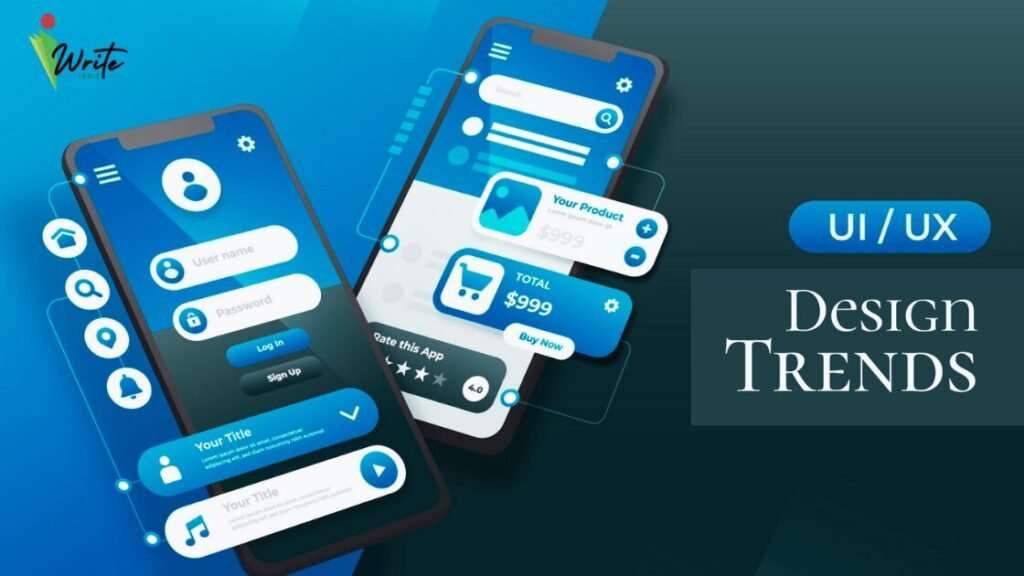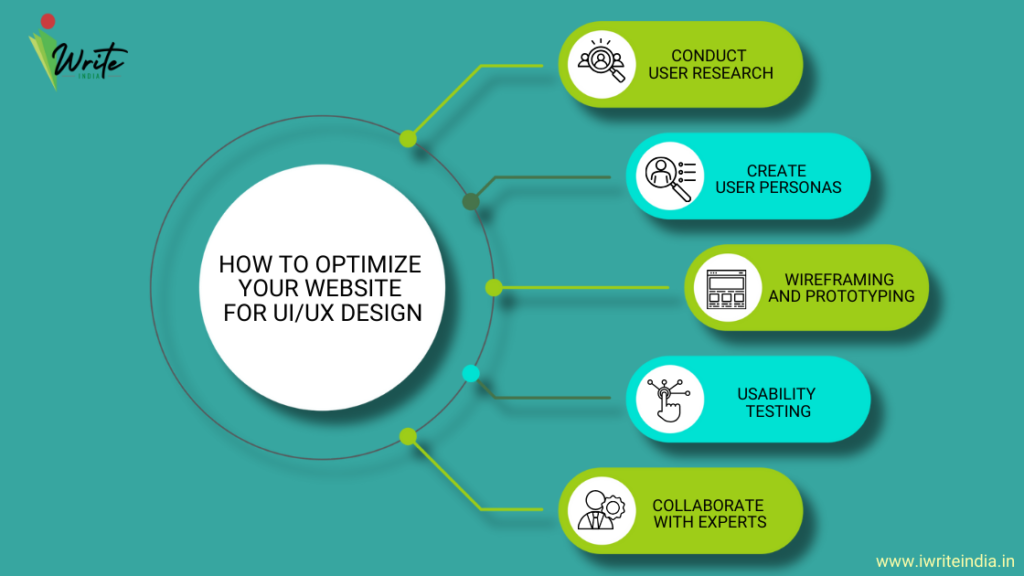In the digital world, first impressions aren’t just important—they’re everything!
Imagine your website as the storefront of your brand, where the doors are always open, and the visitors never stop coming. Whether you’re a budding startup eager to make waves or an established brand looking to elevate your online experience, the key to captivating and retaining your audience lies in exceptional UI/UX design.
This guide isn’t just another walk through the basics. We’re diving deep into the art and science of UI/UX design, exploring the latest trends, and sharing actionable insights to help you craft a digital presence that not only stands out but also keeps visitors coming back for more. Ready to transform your website into a user-friendly masterpiece? Let’s get started!
What is UI/UX Design?
UI (User Interface) and UX (User Experience) design are often mentioned together but serve distinct roles in website development.
UI design focuses on a website’s look and interactive elements, including buttons and icons, typography, and colour schemes.
UX design, on the other hand, is about the overall feel of the experience. It’s about ensuring that a user’s journey through a website is smooth, intuitive, and enjoyable.
Here are the key differences between UI (User Interface) and UX (User Experience) design:
| Aspect | UI (User Interface) Design | UX (User Experience) Design |
|---|---|---|
| Focus | Visual and interactive aspects of a website | Overall user journey and experience |
| Objective | Create an aesthetically pleasing and responsive interface | Ensure a smooth, intuitive, and satisfying user experience |
| Key Components | Buttons, icons, typography, colour schemes, layout | User flow, wireframes, usability, accessibility |
| Tools Used | Adobe XD, Figma, Sketch | User personas, user journey maps, prototyping tools |
| Responsibility | How the website looks and functions visually | How the website feels and how users interact with it |
| Considerations | Visual appeal, consistency, branding, responsiveness | Usability, user satisfaction, emotional impact, efficiency |
| Process | Design interface elements, create style guides, refine visuals | Conduct user research, create wireframes, perform usability tests |
| Outcome | A visually appealing and interactive website interface | A seamless and enjoyable user journey leading to higher engagement |
This table provides a clear distinction between UI and UX design, illustrating how both roles complement each other in creating an effective and user-friendly website design.
When these two elements are combined effectively, they create a user-friendly website design that not only attracts visitors but also keeps them engaged and converts them into loyal customers.
The Importance of UI/UX Design for Digital Success

In a crowded digital marketplace, a well-designed UI/UX can be the differentiator that sets your brand apart. A poorly designed website can drive users away in seconds, resulting in lost opportunities and revenue. On the other hand, a user-friendly website design can enhance user satisfaction, increase time spent on your site, and boost conversions.
Here are some key reasons why investing in UI/UX design is crucial:
- First Impressions Matter: Studies show that it takes about 50 milliseconds for users to form an opinion about your website. A visually appealing UI design can make a strong first impression and encourage users to explore further.
- Enhanced Usability: A well-thought-out UX design ensures that users can easily navigate through your site, find the information they need, and complete desired actions without frustration.
- Higher Conversion Rates: A seamless and intuitive user experience can significantly increase conversion rates. According to Forrester Research, a well-designed UI could raise your website’s conversion rate by up to 200%, while a better UX design could yield conversion rates of up to 400%.
- Improved SEO: Search engines like Google consider user experience as a ranking factor. A user-friendly website design with fast load times, mobile optimisation, and easy navigation can improve your site’s SEO performance.
Key Elements of Effective UI/UX Design

To create a successful digital presence, focus on these essential elements of UI/UX design:
- Responsive Design: In an era where mobile traffic surpasses desktops, having a responsive design is non-negotiable. A website development company in Delhi can help ensure your site looks and works great on all devices.
- Intuitive Navigation: Users should be able to find what they’re looking for with minimal clicks. A well-structured menu and logical site layout are key components of a user-friendly website design.
- Consistent Branding: Your website should reflect your brand’s identity through consistent use of colours, fonts, and imagery. This not only enhances the visual appeal but also reinforces brand recognition.
- Fast Load Times: Users expect websites to load in under three seconds. Slow load times can lead to high bounce rates and lost traffic. Optimise images, use efficient coding practices and consider a Content Delivery Network (CDN) to speed up your site.
- Accessibility: Design your website to be accessible to everyone, including those with disabilities. This not only broadens your audience but also ensures compliance with web accessibility standards.
Latest Trends in UI/UX Design

Staying updated with the latest UI/UX design trends can help you keep your website fresh and engaging. Here are some current trends to consider:
- Dark Mode: With its growing popularity, dark mode is becoming a standard feature. It reduces eye strain, saves battery life, and gives your website a modern look.
- Microinteractions: These are subtle animations or responses triggered by user actions, such as a button changing colour when clicked. They add a layer of interactivity and enhance the user experience.
- Minimalism: Less is more in UI/UX design. A clean, uncluttered interface helps users focus on the content and makes navigation easier.
- Voice User Interface (VUI): As voice search becomes more prevalent, incorporating VUI into your website design can improve accessibility and user engagement.
- Personalization: Using AI and machine learning to tailor the user experience based on individual preferences is becoming a game-changer in UI/UX design.
How to Optimize Your Website for UI/UX Design

- Conduct User Research: Understand your target audience’s needs, preferences, and pain points. Use surveys, interviews, and analytics to gather data and inform your design decisions.
- Create User Personas: Develop detailed profiles of your ideal users. These personas will guide your design choices and help you create a more tailored user experience.
- Wireframing and Prototyping: Before diving into full-scale development, create wireframes and prototypes to map out the user flow and test different design concepts.
- Usability Testing: Regularly test your website with real users to identify any usability issues. Make iterative improvements based on feedback to enhance the user experience.
- Collaborate with Experts: Partner with a reputable website development company in Delhi to ensure your UI/UX design aligns with industry best practices and leverages the latest technologies.
What is the Next Step?
Investing in UI/UX design is not just about making your website look good; it’s about creating a digital presence that is user-centric, engaging, and effective in driving business results. By focusing on the key elements and latest trends in UI/UX design, you can set your website up for success.
At iWrite India, we specialise in creating user-friendly website designs that not only captivate your audience but also drive conversions. Whether you’re starting from scratch or looking to revamp your existing site, our team of experts is here to help you every step of the way.
Connect today and learn how we can elevate your digital presence!
FAQs for UX/UI Design in 2024
1. How can a well-designed UI/UX contribute to a brand’s long-term success?
A well-designed UI/UX goes beyond just creating a visually appealing website. It plays a critical role in building and maintaining a brand’s identity and reputation over the long term. When users consistently have a positive experience on your site—finding it easy to navigate, intuitive, and aligned with their needs—they begin to associate those positive feelings with your brand. This fosters trust and loyalty, which are crucial for long-term success. Additionally, a strong UI/UX can set you apart from competitors by providing a superior user experience that keeps visitors coming back and encourages word-of-mouth referrals. In essence, UI/UX design is an investment in your brand’s future, contributing to sustained user engagement, higher customer retention rates, and, ultimately, greater business growth.
2. What role does user research play in crafting an effective UI/UX design?
User research is the cornerstone of any successful UI/UX design process. By deeply understanding your target audience—who they are, what they need, how they think, and how they behave—you can design interfaces that truly resonate with them. This research involves gathering data through various methods such as surveys, interviews, usability testing, and analytics. The insights gained help you create user personas, which guide every design decision, ensuring that the final product is tailored to meet the specific needs and preferences of your users. Without thorough user research, even the most aesthetically pleasing design might fail to deliver a satisfying user experience, leading to lower engagement and higher bounce rates.
3. How does incorporating microinteractions improve user engagement?
Microinteractions are subtle, often overlooked elements of UI/UX design, but they have a significant impact on user engagement. These are the small animations or responses that occur in response to a user’s action—such as a button changing colour when clicked or a confirmation message appearing after a form submission. While they may seem minor, microinteractions provide essential feedback to the user, making the interaction feel more intuitive and rewarding. They enhance the overall user experience by adding a layer of interactivity and engagement that makes the interface feel more responsive and alive. Over time, these small touches can significantly improve how users perceive your site, leading to better retention and satisfaction.
4. How can UI/UX design influence the accessibility of a website?
Accessibility in UI/UX design means making your website usable for as many people as possible, including those with disabilities. This involves designing with features like screen reader compatibility, keyboard navigability, and appropriate colour contrast for visually impaired users. An accessible design ensures that all users, regardless of their abilities, can navigate your site, consume content, and perform actions without unnecessary barriers. Beyond being a legal and ethical obligation, improving accessibility also broadens your audience base, as it includes users who might otherwise be excluded from engaging with your content. Moreover, accessibility can positively impact your SEO, as search engines increasingly prioritise accessible content in their ranking algorithms.
5. Why is it important to continuously update and test your UI/UX design?
UI/UX design isn’t a one-time effort; it requires ongoing attention and refinement. As technology evolves and user behaviours change, what worked well a year ago might not be as effective today. Regular updates and testing allow you to stay ahead of trends and adapt to new user expectations. Continuous usability testing, in particular, is crucial because it provides real-time feedback on how users interact with your site. This enables you to identify and address any issues before they become major problems, ensuring that it is a user friendly website design and is effective. Additionally, by continually optimising your UI/UX design, you can keep improving conversion rates, user satisfaction, and overall site performance, maintaining a competitive edge in the digital landscape.





